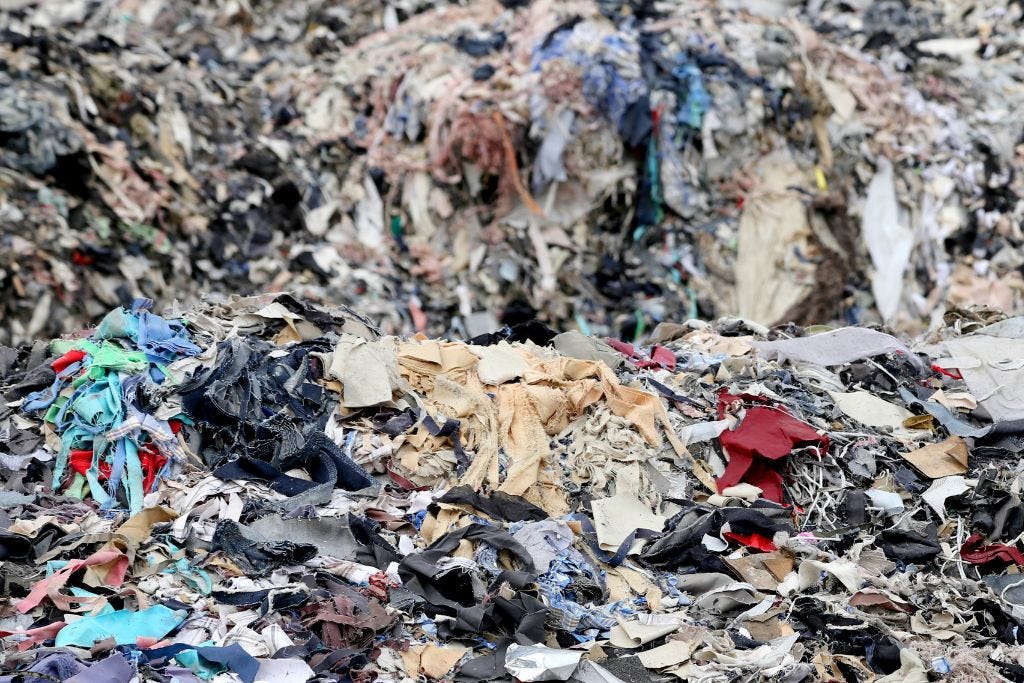5 Sustainable Fashion Trends that are Reshaping the Industry in 2024
Embracing Innovation and Regulation: Steering the Fashion Industry Towards a Sustainable Future
As the fashion industry confronts the challenges posed by fast fashion, the environmental repercussions of over-production (and consumption) are becoming increasingly evident. With 25 and 40% of all fabric used in factories worldwide either leftover or becomes waste1, the urgency for sustainable practices has reached a critical point. In response, the industry is witnessing a surge in stringent regulations and new innovative solutions aimed at reducing this waste and reshaping fashion's impact on the environment. This article explores five key trends illustrating how the industry is evolving to pave the way for a sustainable and accountable fashion future.
1. Stronger Regulations Fostering Ethical Fashion
As part of its Strategy for Sustainable and Circular Textiles aimed at greener fashion, the European Union (EU) has implemented a ban on the destruction of unsold textiles and footwear, introducing a new precedent for the industry. This is accompanied by legislation aimed at curbing greenwashing, ensuring that environmental claims by businesses are substantiated.
Moreover, the EU's introduction of a digital product passport aims to revolutionize transparency within the industry. These regulatory changes are crucial for encouraging a global shift towards sustainable practices and could serve as a model for other regions, including the United States, which currently still lags in sustainable fashion regulations.2
2. New Circular Solutions to Tackle and Reduce Waste
The fashion industry is making significant strides with new technologies that enable more effective recycling of fibers. These technologies focus on automating the separation of mixed materials, which is a major hurdle in textile recycling, thus fostering a more circular economy in fashion3.
Additionally, the increasing adoption of resale and take back programs marks another stride towards circularity. Brands like Patagonia, MUD Jeans, and Neem are leading this trend by extending the life of clothes and dramatically reducing waste, showcasing a successful model of a circular fashion economy4
3. Slowing Down the Fast Fashion Hysteria
While fast fashion is only going faster this year with Shein and Temu leading the race and experiencing unprecedented growth5, other brands are trying to slow down this trend with more ethical practices. For example, on demand fashion is becoming increasingly popular among fashion brands as a method to minimize waste and align production more closely with consumer demand as opposed to fast fashion6.
Some brands using this approach include Eckhaus Latta which has partnered with the world’s first 3D weaving technology for apparel Unspun for their spring 2024 collection. Vega™ 3D is able to weave yarn directly into clothing thus reducing the need for large order quantity and overproduction.
4. Seaweed: The Sustainable Material Making Waves
According to Vogue, “seaweed is the material of the moment” and is one of the key trend in 20247. Notable for its low environmental impact, seaweed is being used in new and innovative ways. Stella McCartney's debut of a seaweed-based yarn, Kelsun™️, on the spring 2024 runway, alongside brands like Another Tomorrow partnering with SeaCell, highlights the growing interest in this sustainable resource. These developments demonstrate the potential of seaweed to serve as a great alternative to conventional textiles, driving forward the industry's sustainable transformation.
5. Shifting Dyes to More Sustainable Alternatives
Currently, the dyeing process of cotton consumes a lot of water, with estimates suggesting that dyeing and finishing require about 125 liters of water per kilogram of cotton fibers8. Some innovation is however underway which is bound to make this process more sustainable. ColorZen's patented technology, for example, is able to accelerate the dyeing process while cutting water usage by 90%. Other technologies like algae-based dyes are now also being used by brands like Nike with their Billie Eilish collaboration to reduce the impact of dying.
Conclusion
Despite clear challenges such as the rise of fast fashion, the increasing implementation of stringent regulations in the EU is poised to significantly reshape the fashion industry in the years to come. Additionally, the adoption of innovative new materials and advanced recycling and dying techniques will contribute to mitigating environmental impacts. Together, these developments are expected to have a profound and positive effect on the industry, steering it towards a more sustainable and responsible future. This shift not only addresses immediate ecological and human concerns but also sets a global standard that other regions might follow, fostering a broader movement towards sustainability in fashion worldwide.
This Week in Sustainability is a weekly email from Brightest (and friends) about sustainability and climate strategy. If you’ve enjoyed this piece, please consider forwarding it to a friend or teammate. If you’re reading it for the first time, we hope you enjoyed it enough to consider subscribing. If we can be helpful to you or your organization’s sustainability journey, please be in touch.
https://environment.ec.europa.eu/topics/circular-economy/reset-trend/how-eu-making-fashion-sustainable_en
https://www.youngeden.com/blogs/sustainability-matters/3-major-trends-in-sustainable-fashion-to-expect-in-2024
https://www.asustainablecloset.com/home/5-sustainable-fashion-trends-to-watch-out-for-in-2024
https://goodonyou.eco/brands-take-back-schemes/
https://qz.com/fast-fashion-is-only-going-to-get-faster-in-2024-1851137313
https://fabryx.co.uk/why-print-on-demand-is-a-superior-sustainable-alternative-to-fast-fashion/
https://www.vogue.com/article/6-ways-the-fashion-industry-can-become-more-sustainable
https://www.plugandplaytechcenter.com/resources/how-sustainable-dyeing-changing-textile-industry/










